Japanese Streetwear: Tokyo Fashion Subculture
Exploring The Significance Of Tokyo’s Streetwear And Where To Buy It
In this series, we will be exploring all the fashion subcultures that have made Japan the fashion powerhouse it is today. Starting as a subculture in the back streets of Harajuku, Japanese streetwear has since gone on to become a global sensation, with many still dressing and replicating the style today.
When it comes to Tokyo’s fashion subcultures, Japanese streetwear is by far one of the most iconic and legendary. Starting life in the streets of New York, streetwear can loosely be defined as a type of casual clothing that incorporates elements of sportswear and skateboarding with influences from music genres including hip-hop and punk. Think oversized silhouettes and comfortable clothing such as oversized t-shirts, jeans, sneakers and hoodies.
The History and Cultural Significance of Japanese Streetwear
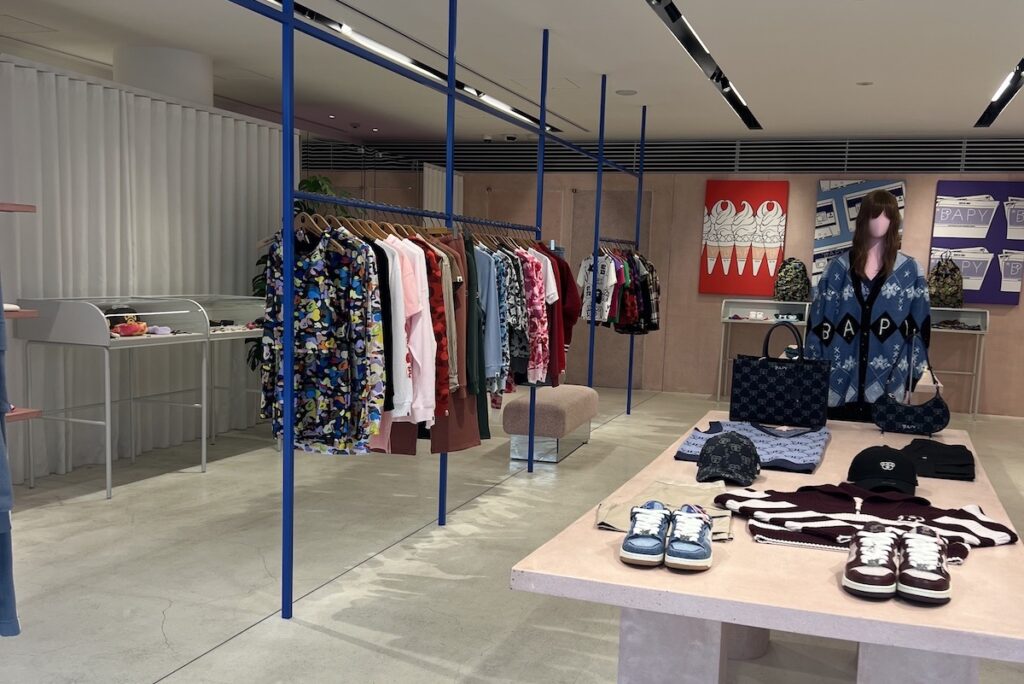 © Photo by Jane Pipkin
© Photo by Jane PipkinThe history of Japanese streetwear can be traced back to the 1950s and 60s. A new generation of young Japanese began to adopt more American fashion trends—taking inspiration from pop culture. However, it wasn’t until the late 1980s and 1990s that the fashion trend became what we know today.
It was in the 90s that the subculture movement Urahara meaning “the back streets of Harajuku”, pioneered by Nigo (creator of BAPE), Jun Takahashi (owner of Undercover) and Hiroshi Fujiwara, drew together creatives. These creatives shared an interest in hip-hop, punk, surf and skate culture as well as iconic American brands like Levis. Over time, the subculture grew and those involved in the movement started to construct their own more distinctive styles. These streetwear styles differed from that in America.
Interestingly, despite streetwear being initially more popular with men, by the late 90s, more women were putting their own stamp on the style. Many women opted to embrace more oversized fits and increasingly strayed away from traditional feminine silhouettes.
Why is Japanese streetwear still popular?
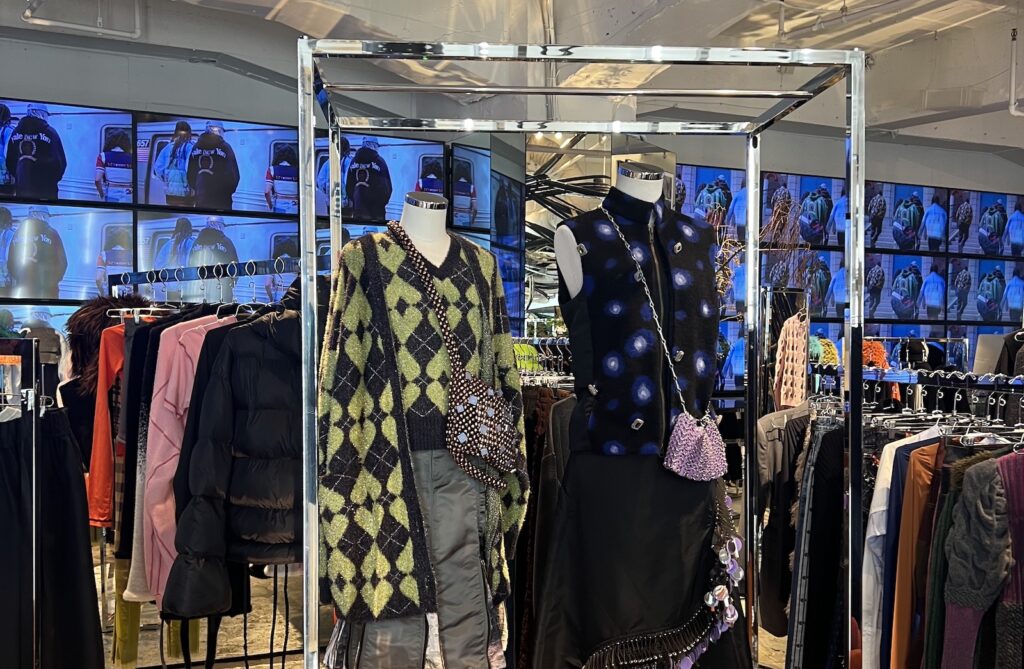 © Photo by Jane Pipkin
© Photo by Jane PipkinJapanese streetwear brands such as BAPE and Undercover are super renowned in the world. They are loved by many celebrities and fashion enthusiasts alike. This is partly because these designers were unafraid to push style boundaries and were known for their expectational craftsmanship. Over the years, these designers also cleverly integrated themselves into the global fashion scene by collaborating with American brands like Nike.
The impact that Western brands like Supreme, Stussy and Huf have had on the continued popularity of Japanese streetwear cannot be denied either. These brands, with their quintessentially American feel, became overnight successes the moment they landed in Japan. They were seen as a blueprint for Urahara followers.
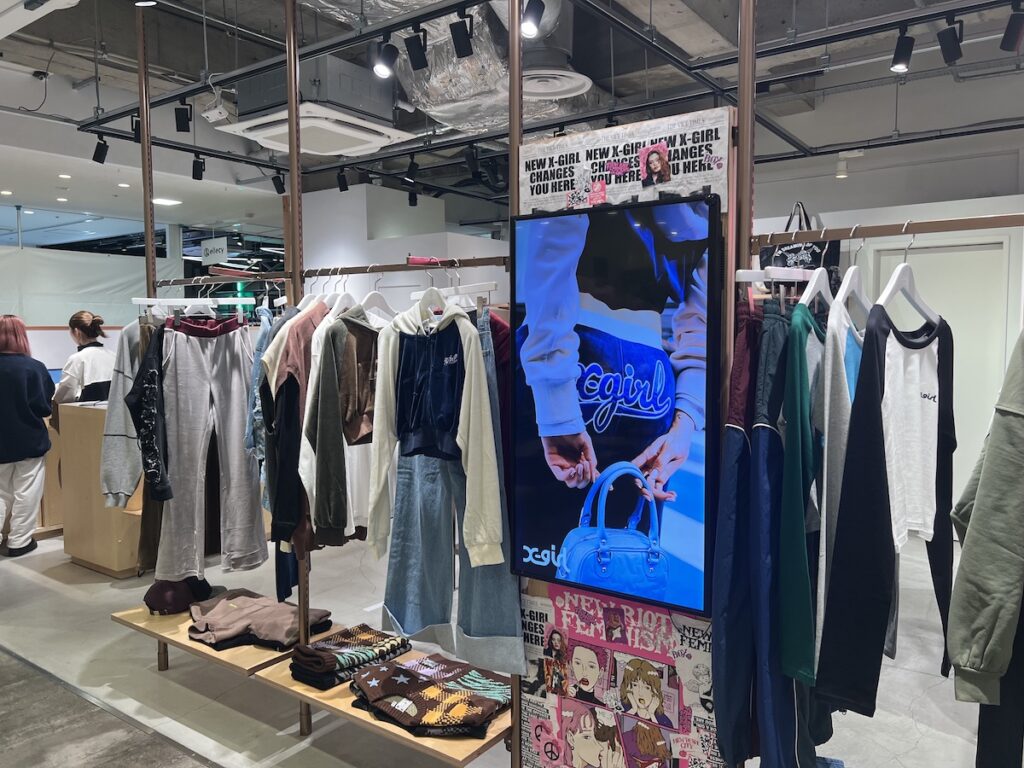 © Photo by Jane Pipkin
© Photo by Jane PipkinStreetwear appears to be one of the fashion subcultures that has seamlessly transcended into different social eras. One of the reasons that it has outlasted other fashion subcultures—such as the Lolita style—is the fact that the clothing items that makeup streetwear are fairly versatile. They can easily be worn on the day-to-day. There is also a sense of nostalgia when it comes to the streetwear subculture. Since, much of its influences derive from past music, art and youth culture.
Where to Shop Japanese Streetwear
Nowadays, streetwear has become more of a mainstream than a subculture meaning that it is easy to buy streetwear pieces. Given that Japanese streetwear found its humble beginnings in Harajuku, this area is by far the best to go.
BAPE
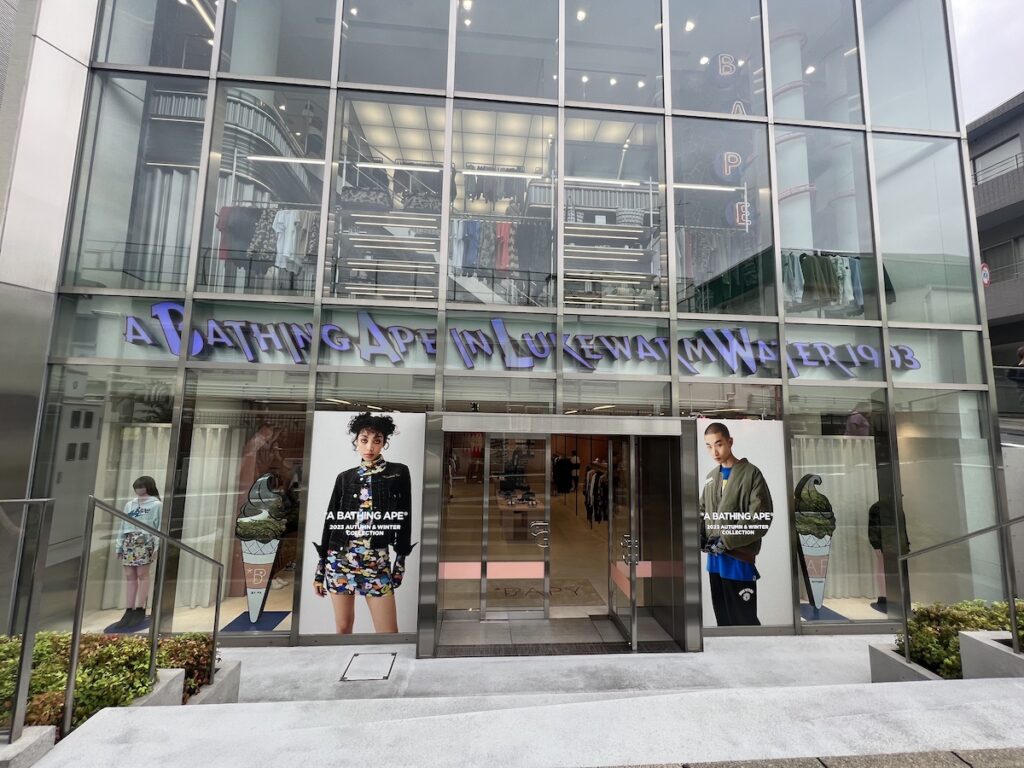 © Photo by Jane Pipkin
© Photo by Jane PipkinOne of the most hyped Japanese streetwear brands is BAPE (A Bathing Ape). It’s most known for its cloud camo print and legendary items like the shark hoodie and Bapesta sneakers. Many of the designs take influence from hip-hop and have a contemporary and casual feel to them. They are considered true streetwear staples. You can find the main BAPE flagship store in Jingumae, with womenswear being on the first floor.
Address: 4-21-5 Jingumae, Shibuya City, Tokyo
Comme des Garcons
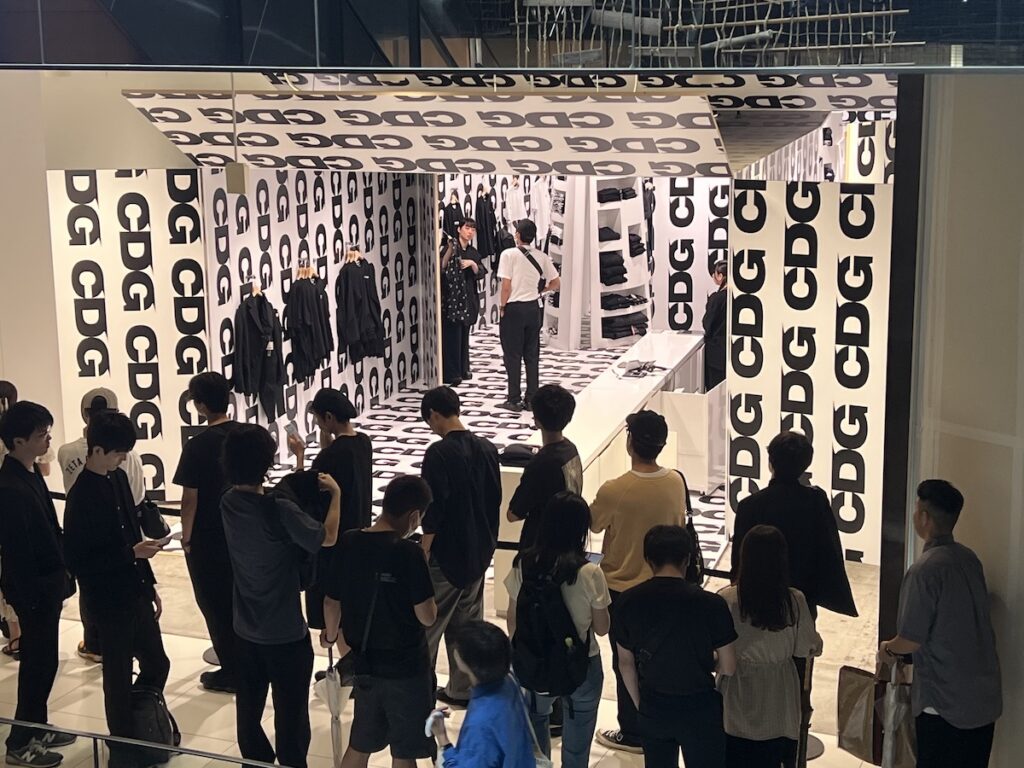 © Photo by Jane Pipkin
© Photo by Jane PipkinFounded in 1969 by designer Rei Kawakubo, Comme des Garcons has become a household name in the fashion industry. It’s most famous for its take on avant-garde fashion and use of unique silhouettes. Over the years the brand expanded and formed other sub-labels including Comme des Garcons Play and Comme des Garcons Homme Plus. Both of which are popular within the streetwear subculture.
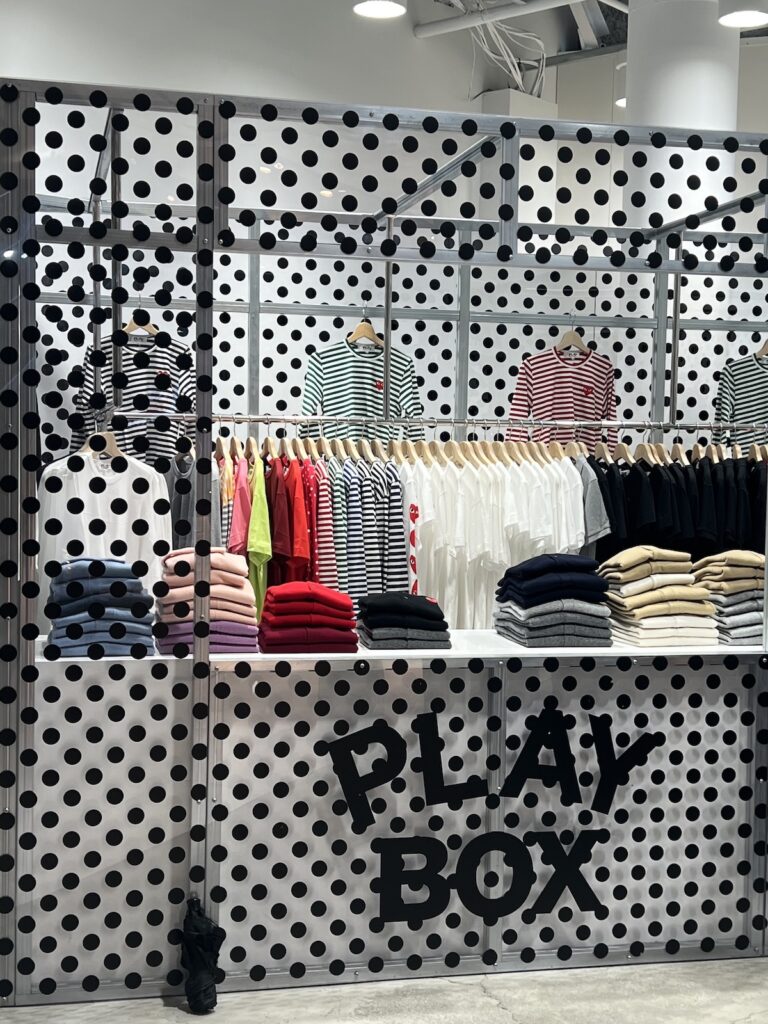 © Photo by Jane Pipkin
© Photo by Jane PipkinComme des Garcons Play is one of the more accessible labels in regard to price. It is designed for those who prioritize logo-based streetwear. The Heart Face logo is instantly recognizable. Many celebrities including Kayne West and Alexa Chung have worn something with the famous Heart Face on.
Address: 107-0062, 5 Chome-2-1 Minamiaoyama, Minato City, Tokyo
GR8
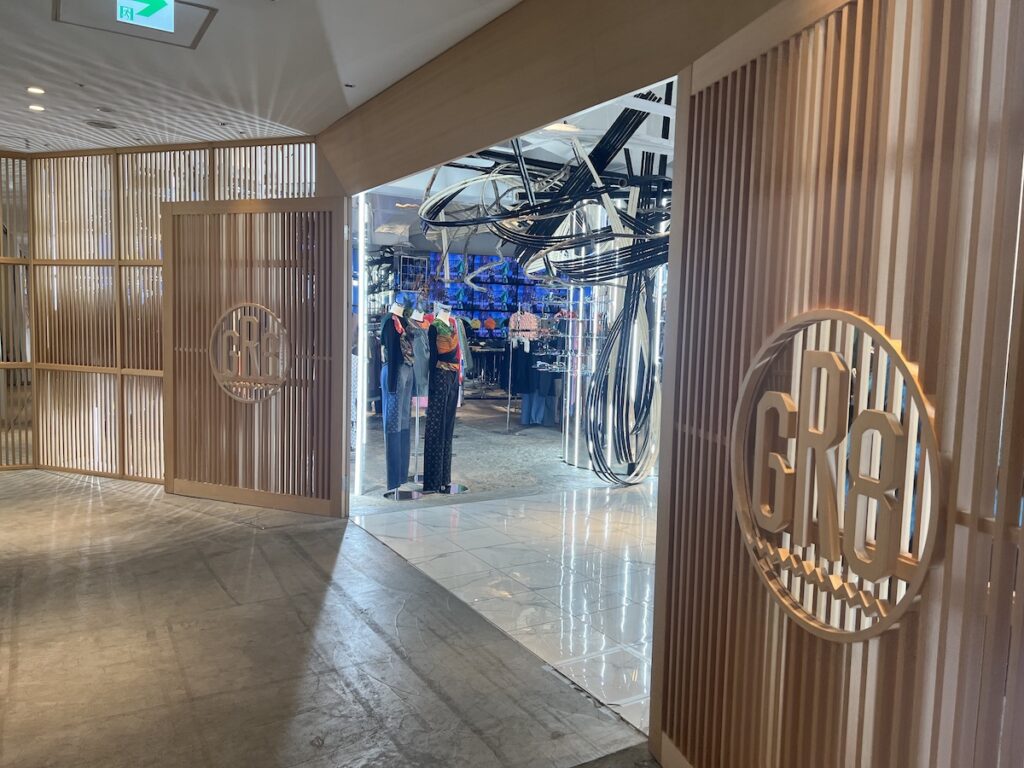 © Photo by Jane Pipkin
© Photo by Jane PipkinLocated on the fifth floor in LaForet, a department store in Harajuku, GR8 is a streetwear lovers’ dream. It offers a unique shopping experience. The boutique itself has beautiful interiors, using zen-like architecture to contrast with the contemporary and out-there clothing on display.
Despite being mostly filled with international streetwear brands, there are some Japanese brands that you can find. One example is Neighborhood, a Harajuku-born brand characterized by the edgy and biker-gang look of its clothes.
GR8 is a great place to discover new designers and uncover upcoming trends. It’s worth checking out the other floors in LaForet as some of the other brands sell more affordable alternatives. Make sure to take a walk around the first floor as well. There are often exclusive brand pop-up stalls that are set up there.
Address: LaForet 5F, 1-11-62 Jingumae, Shibuya City, Tokyo
X-girl
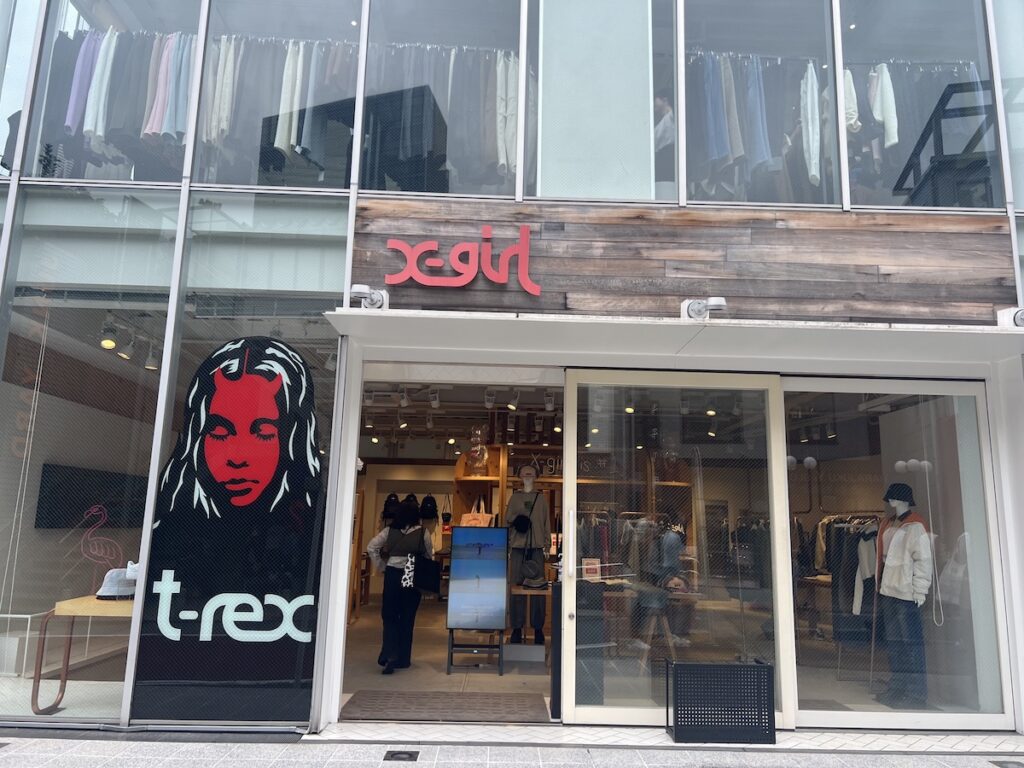 © Photo by Jane Pipkin
© Photo by Jane PipkinFounded in America in 1994, X-girl is one of the most loved streetwear brands among Japanese girls. X-girl mainly stocks items such as graphic t-shirts, sweatpants and cargo trousers. They have a rock and sporty feel to them—perfect for anyone wanting to possess a “90s cool girl aesthetic”. Although you can find several branches across Japan, the main store is located in Jingumae.
Address: 4-25-28 Jingumae, Shibuya City, Tokyo
Thrift & Resale Stores
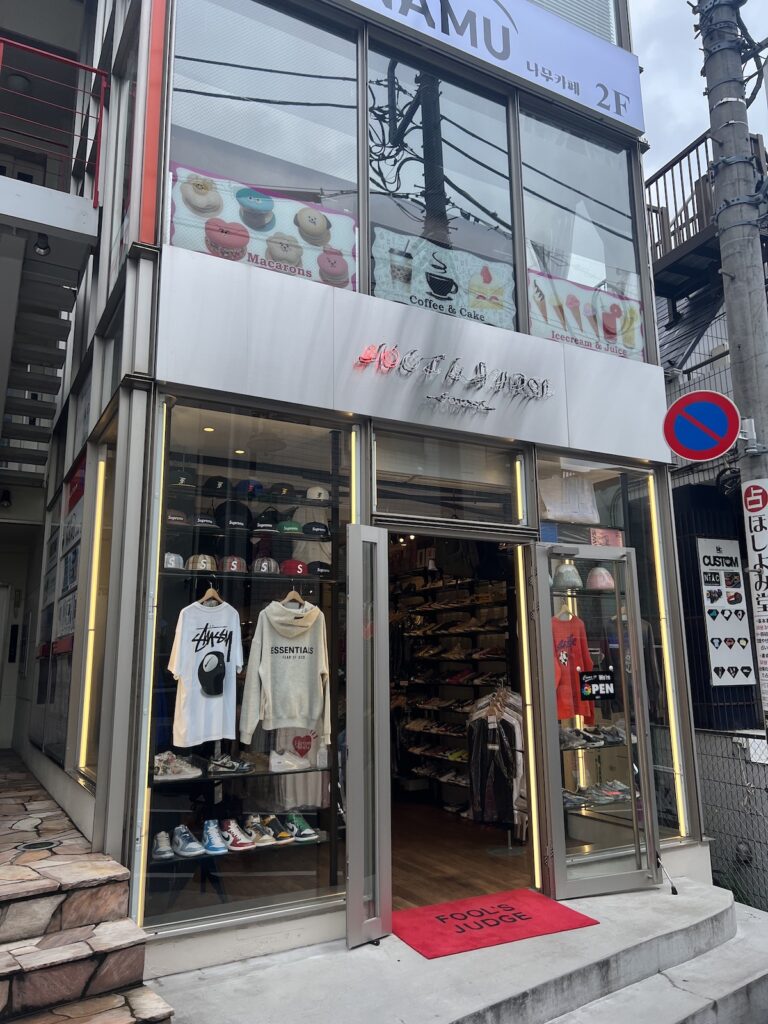 © Photo by Jane Pipkin
© Photo by Jane PipkinStreetwear pieces from big brands can be rather pricey. Many young Tokyoites often choose to rummage through different thrift stores to find what they are looking for. In Harajuku itself, you will find several carefully curated vintage stores and thrift stores. Kinji, Chicago and 2nd Street all have high-quality and unique streetwear pieces. These stores are particularly good if you want items from other streetwear brands like Nike, Adidas, Carhartt and Dickies.
Another alternative is to consider going to a specialist brand resale shop like Brand Collect or Fool’s Judge. Here, you can buy second-hand authentic streetwear items. However, it should be noted that these tend to still be fairly expensive given their condition and rarity. Highly recommended for those searching for items from a specific drop or designs that are no longer sold in retail stores.
Uniqlo & GU
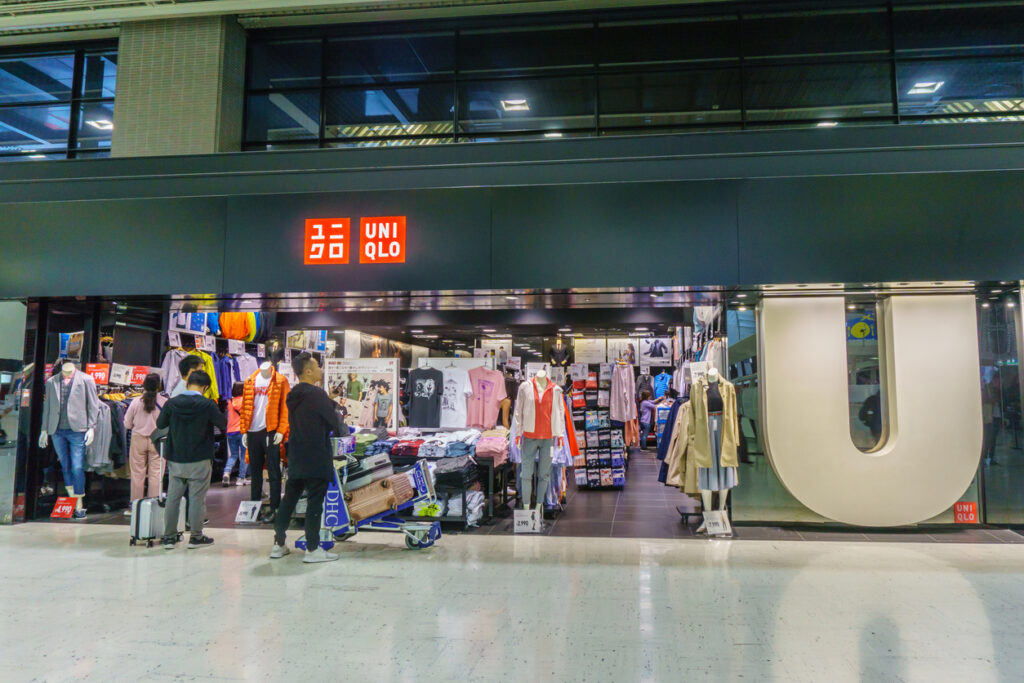 © Photo by iStock: BestForLater91
© Photo by iStock: BestForLater91You don’t need to have a wardrobe filled with designer streetwear items to be able to effectively pull off the style. Fast fashion brands like Uniqlo and GU sell basics such as cargos and graphic t-shirts which work just as well. If you are someone who prefers branded stuff, Uniqlo is also famous for its world-class collaborations. They collaborate with top artists such as Kaws and Takashi Murakami who are popular in the streetwear world.
Interested in other Tokyo fashion subcultures?
Here are others we’ve covered:
What are your favorite streetwear brands in Japan? Let us know in the comments below!













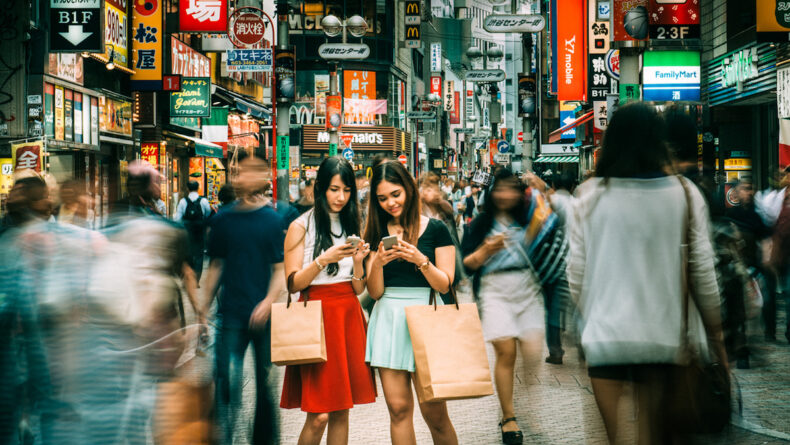


Leave a Reply